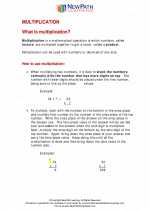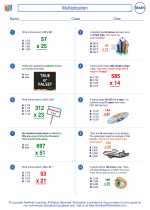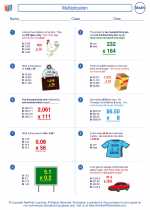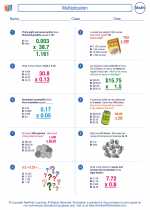Factoring by Substitution
Factoring by substitution is a technique used to factorize a given quadratic expression by making a substitution that simplifies the expression into a form that can be easily factored. This method is particularly useful when the quadratic expression is not easily factorable using traditional methods such as factoring by grouping or trial and error.
Step-by-Step Guide for Factoring by Substitution
- Identify the Quadratic Expression: Start by identifying the given quadratic expression that you want to factorize.
- Make a Substitution: Let a new variable equal to a portion of the original expression. For example, if the expression is in the form \(ax^2 + bx + c\), let \(u = x^2\) to simplify the expression.
- Factor the Substituted Expression: Factor the substituted expression using any suitable factoring method such as difference of squares, perfect square trinomial, or grouping.
- Replace the Substituted Variable: Replace the substituted variable with the original variable to obtain the factored form of the original quadratic expression.
Example:
Factor the quadratic expression \(4x^2 + 12x + 9\) using substitution.
- Identify the Quadratic Expression: The given quadratic expression is \(4x^2 + 12x + 9\).
- Make a Substitution: Let \(u = 4x^2\) to simplify the expression.
- Factor the Substituted Expression: The substituted expression \(u + 12x + 9\) can be factored as \((u + 9)(u + 1)\).
- Replace the Substituted Variable: Replace \(u\) with \(4x^2\) to obtain the factored form: \((4x^2 + 9)(4x^2 + 1)\).
By following the steps above, the quadratic expression \(4x^2 + 12x + 9\) has been factored using substitution.
Practice Problems:
Now, let's try some practice problems to solidify your understanding of factoring by substitution:
- Factor the quadratic expression \(9x^2 - 6x + 1\) using substitution.
- Factor the quadratic expression \(16x^2 - 40x + 25\) using substitution.
Remember to make the appropriate substitution and follow the step-by-step guide to factorize each expression.
.◂Math Worksheets and Study Guides Sixth Grade. Multiplication
Study Guide Multiplication
Multiplication  Worksheet/Answer key
Worksheet/Answer key Multiplication
Multiplication  Worksheet/Answer key
Worksheet/Answer key Multiplication
Multiplication  Worksheet/Answer key
Worksheet/Answer key Multiplication
Multiplication 

 Worksheet/Answer key
Worksheet/Answer key
 Worksheet/Answer key
Worksheet/Answer key
 Worksheet/Answer key
Worksheet/Answer key

The resources above cover the following skills:
The Number System
Compute fluently with multi-digit numbers and find common factors and multiples.
Fluently multiply and divide multi-digit whole numbers using the standard algorithm. Express the remainder as a whole number, decimal, or simplified fraction; explain or justify your choice based on the context of the problem.